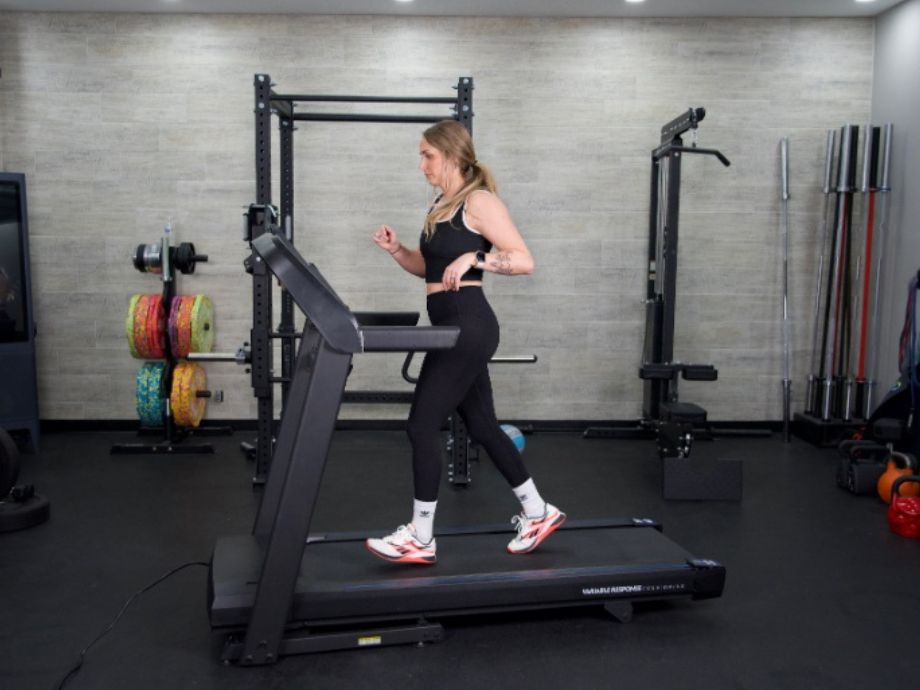We test and review fitness products based on an independent, multi-point methodology. If you use our links to purchase something, we may earn a commission. Read our disclosures.
The average walking speed falls between a leisurely stroll and a hip-wiggling power walk. And truthfully, your average walking speed changes over time. The under-30s are the speed demons, while the over-65s tend to take the slow and steady approach to their normal walking speed.
You can walk for weight loss, brain health1, and simply because it feels good to move your body. Knowing the average walking speed (between 2 and 3 miles per hour) can help determine how fast and far you need to go to enjoy the health benefits. Gender, age, weight, height, and overall health are also factors that can affect how quickly you walk.
RELATED: Benefits of Walking on a Treadmill
Whether you’re a beginner or a seasoned “mall walker,” keep reading and learn how to determine and adjust your stride to match your health and wellness goals.
What Is the Average Walking Speed?
According to a 2020 study published in Sustainability2, the average walking speed breaks down to this:
| Age | Average Walking Speed |
| Under 30 | 3.0 mph |
| 30-39 | 2.8 mph |
| 40-49 | 2.8 mph |
| 50-59 | 2.75 mph |
| 60-65 | 2.69 mph |
| Over 65 | 2.1 mph |
A comfortable walking speed falls between 2.75 and 3 mph for the average healthy adult. That’s the speed at which someone would walk down the street or around the grocery store (sans cart). This is a fast pace rather than a stroll through the park but isn’t necessarily a brisk walking pace and won’t cause you to sweat unless you’re in high temperatures or walking uphill.
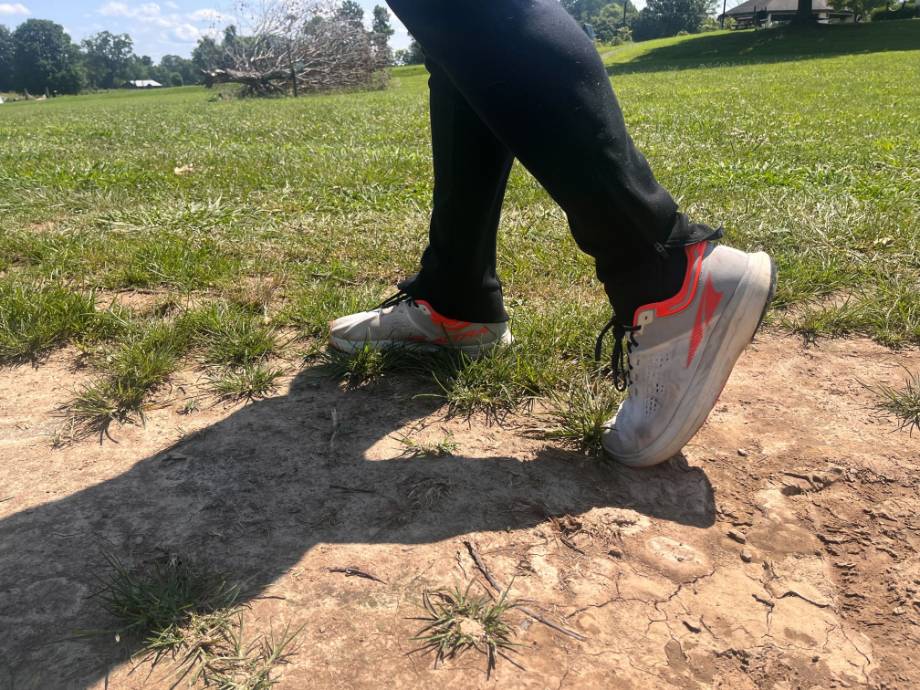
RELATED: Best Walking Apps
How Long Does It Take To Walk a Mile?
At 3 mph, it takes about 20 minutes to walk one mile. However, unless you’re on a treadmill, your speed will likely vary based on outside conditions, so your mile time will be longer or shorter. For most, walking around 3 mph is a fairly comfortable walking pace.
That said, you’ll need a faster pace if you’re looking for health and cardiovascular benefits. The Centers for Disease Control and Prevention3 (CDC) recommends 150 minutes of moderate-intensity exercise per week and considers any pace over 3 mph a “brisk pace.”
The American Heart Association4 (AHA) defines a moderate-intensity activity as one that puts your heart rate at 50% to 70% of your maximum heart rate. While you can calculate that number based on estimates of your max heart rate for your age, at a moderate intensity, you should still be able to carry on a conversation. But you probably won’t be able to use complete sentences.
What Factors Affect Your Walking Speed?
Many factors can affect your walking speed, including:
- Age
- Gender
- Height
- Weight
- Fitness level
- Medical or physical conditions
Height is a factor, as taller people have longer stride lengths and walk faster than shorter people.
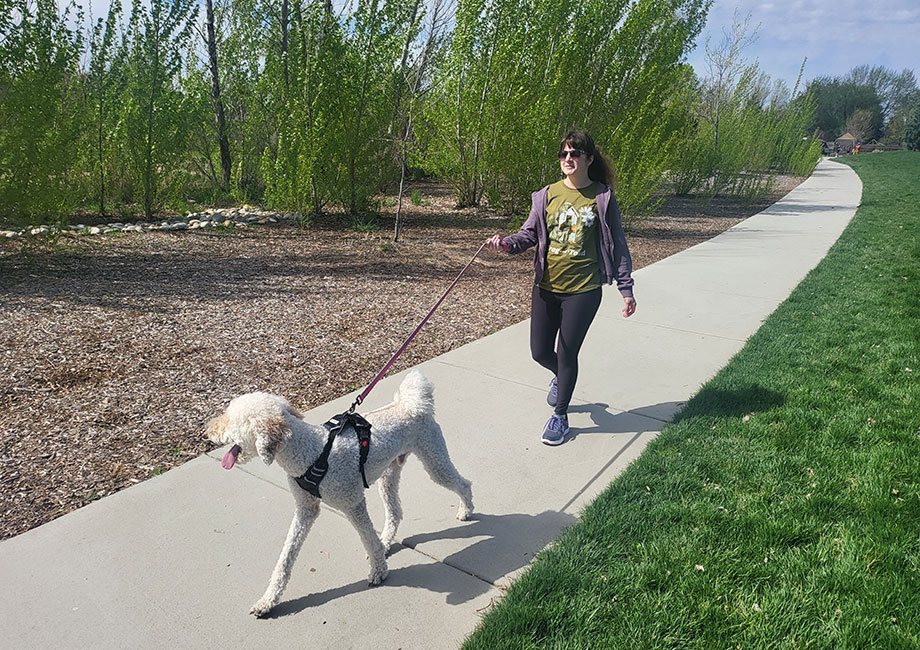
Age plays a big role: People under 30 have the fastest average speed at 3 mph. Walking speed decreases as you age, with older adults walking at an average of 2 mph.
Environmental factors can affect your walking speed from day to day. For example, heat, humidity, and terrain will slow down your average speed.
Medical and physical conditions, along with weight, will also affect your average walking speed.
How Can You Increase Your Walking Speed?
Increasing your walking speed isn’t hard, but it takes a planned approach and patience. Start by taking some baseline assessments of yourself and your walking technique. After all, how will you know if you’re walking faster if you don’t know how fast you typically walk?
You can use your phone, one of the best fitness trackers, a pedometer that measures distance, or a smartwatch to get your baseline speed. Time how long it takes to walk a mile at a comfortable pace. (A treadmill can make this process easier, but you can do it without one as well.)
Repeat that process three or four times and average the results to get your average walking speed.
RELATED: Best Treadmills For Walking
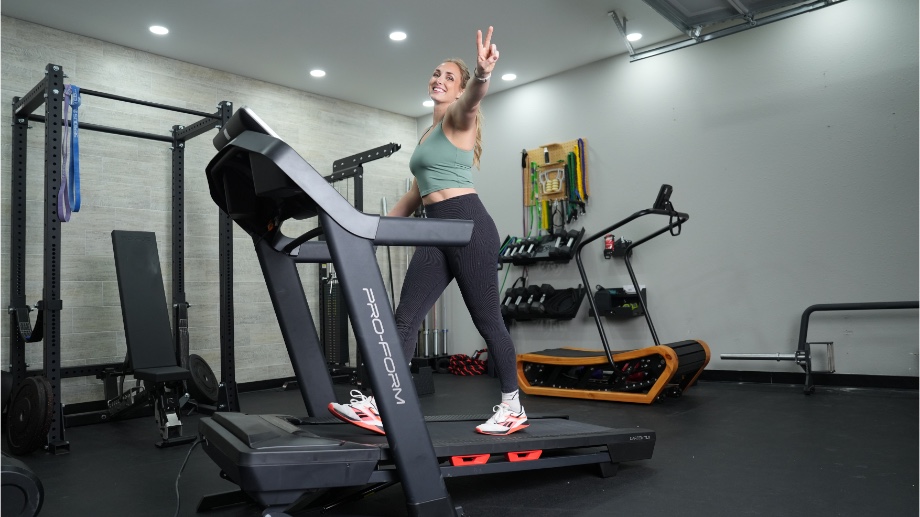
Interval training can help you build speed, but keep in mind that increasing speed will take time. Here’s a sample interval workout:
- Warm-up at a comfortable pace for 10 minutes
- For the following 10 minutes, alternate 30-second intervals of a brisk walking pace and your average pace
- Cool-down at a comfortable pace for 10 minutes
RELATED: How To Use a Treadmill For Interval Training
As you build physical fitness and stamina, increase the length of the fast walking intervals and reduce your time in the slower-paced intervals. With time and effort, you can maintain a faster walking pace for a full 30 minutes. Be sure to reassess your average walking speed every couple of weeks by seeing how long your minute mile clocks out at a comfortable pace. Both your maximum and average walking have the potential to increase over time.
To continue to build up your speed and aerobic capacity, vary your workouts. If you’re using a treadmill, do incline intervals. If you’re walking outside, hit the hills or walk a trail to challenge yourself.
RELATED: Incline Treadmill Workouts
What Are the Benefits of Walking?
For the average person, walking is an inexpensive, easily accessible form of exercise. Even in the winter, you can hit the treadmill or walk at your local mall to keep up with consistent physical activity. However, walking is more than convenient.
Gives Your Brain and Mental Health a Boost
According to a 2019 review published in Genes5, physical activity like walking helps maintain the brain’s plasticity and can improve memory and focus. There’s even evidence that regularly walking can change your brain structure6 for the better as you age. A 2024 systematic review published in JMIR Public Health and Surveillance7 that included reviews of 75 studies found that walking correlates with reduced symptoms of depression and anxiety.
Helps Build Lower-Body Muscle Strength
You might not associate walking with building muscle; however, in an older study published in the Scandinavian Journal of Medicine & Science Sports8, six months of walking training resulted in increased muscle strength and thickness in the lower body. Try walking up stairs or on hills, and you’ll feel how much muscle walking can build. To engage the upper body, hold light dumbbells while you walk.
Is a Low-Impact Cardiovascular Exercise
Whether you’ve got bad knees or arthritis has hit your joints, walking is a low-impact form of cardiovascular exercise. It’s not just your joints that can benefit. A 2017 review published in Disability and Rehabilitation9 found that walking could improve back pain and help people avoid exercise due to discomfort.
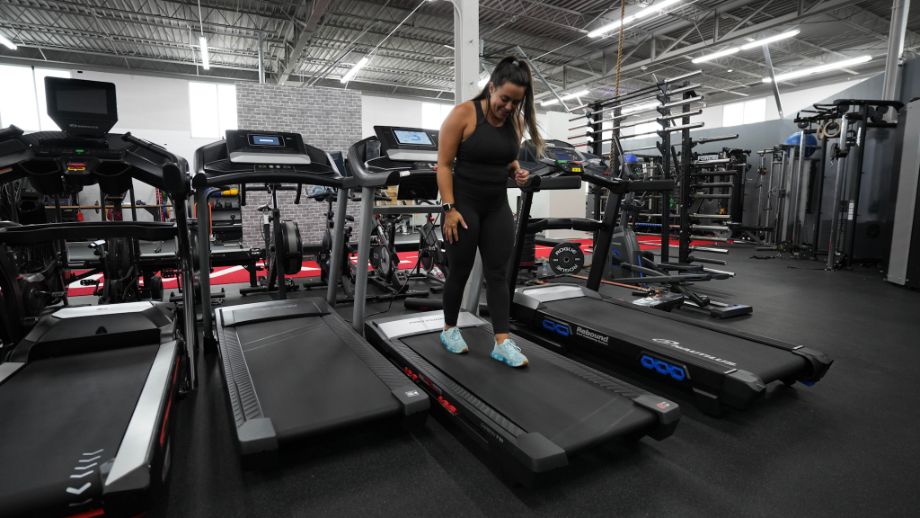
If you want to get fancy (and you should), try walking backward. It challenges your muscles in different ways and puts less stress on your knees10. This is safer on a treadmill because of the smooth surface, but be careful whether on the treadmill or the sidewalk.
May Help Improve Heart Health
Speaking of cardiovascular fitness and exercise, walking can also help reduce your blood pressure and prevent or control hypertension, per a 2021 systematic review11 published by the National Institutes of Health (NIH). Further, walking helps mitigate cardiovascular disease risk factors and encourages older adults and those who are overweight to prevent CVD by staying active12.
Average Walking Speed: Final Thoughts
Walking is an easily accessible form of cardio exercise. Your average walk speed isn’t constant over a lifetime. Walking speed changes with age and physical fitness and varies greatly between individuals. But you can boost your overall health by regularly picking up your pace.
Here are the details worth remembering:
- The average walking speed falls between 2 and 3 mph.
- Factors like height, weight, gender, and physical fitness can affect your average walking speed.
- Walking can be a good way to manage mental health and get the CDC’s recommended 150 minutes of moderate activity per week.
- You can increase your average walking pace by including faster-paced intervals in your walking routine.
- Your walking speed will decrease with age.
So lace up your best pair of walking shoes and get to it!
Average Walking Speed: FAQs
Is walking at 3 mph for 30 minutes good?
Walking at 3 mph for 30 minutes can be good because any activity is better than no activity. Whether or not 3 mph is a moderate intensity depends on your fitness level. If at 3 mph you can talk in broken sentences (a simple indicator of moderate-intensity exercise), you’re at a good pace. However, if at 3 mph for 30 minutes you’re barely out of breath, you probably need to increase your speed to get cardiovascular benefits.
Can I lose weight walking 3.5 mph?
Whether or not you lose weight walking at 3.5 mph will depend on many factors. Your weight, fitness level, time spent walking, and terrain or incline at which you walk, for example, will determine how many calories you burn while walking. Weight loss requires more energy out than energy in. A healthy diet combined with consistent daily exercise, which includes walking at 3.5 mph, may result in weight loss.
What is considered brisk walking speed by age?
Walking that puts your heart rate at 50% to 70% of its max is what the American Heart Association defines as a brisk or moderate-intensity activity. The CDC defines13 a brisk pace as anything walking over 3 mph.
Since it can vary by the individual and you might not want to do calculations, a brisk pace should allow you to talk in broken sentences. For people under 30, that speed could fall between 3.5 and 4 mph. Between ages 30 and 60, a brisk pace could be between 3.2 to 3.7 mph. But these are rough estimates as so many individual factors can affect what feels brisk.
References
- Varma, V.R., et al. (2014). Low-intensity daily walking activity is associated with hippocampal volume in older adults. Hippocampus. 25(5): 605-15. DOI: 10.1002/hipo.22397
- Alves, F.B., Santos Cruz, S., Ribeiro, A., and Bastos Silva, A. (2020). Walkability index for elderly health: A proposal. Sustainability. 12(8): 7360. DOI:10.3390/su12187360
- Centers for Disease Control and Prevention. (2023). Adult Activity: An Overview. https://www.cdc.gov/physical-activity-basics/guidelines/adults.html
- American Heart Association. Target Heart Rates Chart. https://www.heart.org/en/healthy-living/fitness/fitness-basics/target-heart-rates
- Di Liergro, C.M., et al. (2019). Physical activity and brain health. Genes. 10(9): 720. https://doi.org/10.3390/genes10090720
- Best, J. R., et al. (2017). Long-term changes in time spent walking and subsequent cognitive and structural brain changes in older adults. Neurobiology of Aging. 57: 153-161. https://doi.org/10.1016/j.neurobiolaging.2017.05.023
- Xu Z., et al. (2024). The effect of walking on depressive and anxiety symptoms: Systematic review and meta-analysis. JMIR Public Health and Surveillance. 10:e48355. https://doi.org/10.2196/48355
- Kubo, K., et al. (2008). Effects of 6 months of walking training on lower limb muscle and tendon in elderly. Scandinavian Journal of Medicine & Science in Sports, 18(1), 31-39. https://doi.org/10.1111/j.1600-0838.2007.00654.x
- Vanti, C. et al. (2016). The effectiveness of walking versus exercise on pain and function in chronic low back pain: A systematic review and meta-analysis of randomized trials. Disability and Rehabilitation. 41(6): 622-632. https://doi.org/10.1080/09638288.2017.1410730
- Kachanathu, S.J., et al. (2016). An analysis of physical performance between backward and forward walking training in young healthy individuals. Saudi Journal of Sports Medicine. 16(1): 68-73. DOI: 10.4103/1319-6308.165112
- Lee LL, Mulvaney CA, Wong YKY, Chan ES, Watson MC, Lin HH. Walking for hypertension. Cochrane Database Syst Rev. 2021 Feb 24;2(2):CD008823. doi: 10.1002/14651858.CD008823.pub2. PMID: 33630309; PMCID: PMC8128358.
- Omura JD, Ussery EN, Loustalot F, Fulton JE, Carlson SA. Walking as an Opportunity for Cardiovascular Disease Prevention. Prev Chronic Dis. 2019 May 30;16:E66. doi: 10.5888/pcd16.180690. PMID: 31146804; PMCID: PMC6549420.
- Centers for Disease Control and Prevention. Measuring Physical Activity Intensity. https://www.cdc.gov/physicalactivity/basics/measuring/index.html
Further reading

Dive into these Landice treadmill reviews to see what we really think about this brand’s six offerings. Read more

The TUT Trainer is a minimalistic functional trainer. In our TUT Trainer Tower Review, learn why this unique equipment could be a good fit for your home gym. Read more

Built to prevent injury and made to assist newer fitness enthusiasts, see our thoughts on this innovative ab roller in our Ab Carver Pro review. Read more

We’ve rounded up the best creatine gummies so you can get this powerhouse of a supplement in delicious candy form. Read more

